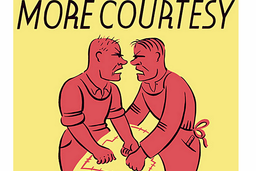States of Pain
The fiscal crises unfolding in legislatures across the country will only get worse in 2010.
Chris Maisano

Last September, Federal Reserve Chairman Ben Bernanke declared, “From a technical perspective, the recession is very likely over.” But he also acknowledged that the damage wrought by the economic downturn would result in additional pain for a long time to come.
Nowhere else is this more apparent than in the slow-motion catastrophe unfolding in state legislatures across the nation, where dwindling tax receipts are forcing many states to confront massive budget deficits that threaten to undermine crucial public services and the fragile economic recovery now underway.
According to recent reports by the Center for Budget and Policy Priorities (CBPP), the states can expect to experience a combined budget deficit of $350 billion for fiscal years 2010 and 2011. Even though the broad economic picture is improving, the CBPP expects that fiscal year 2011, which begins in July 2010, will be even worse. The fiscal assistance that states received from Washington under President Obama’s stimulus package is scheduled to end on December 31, 2010. In the absence of further relief, states would be forced to make painful budget cuts that the CBPP estimates “will take nearly a full percentage point off the Gross Domestic Product” and “cost the economy 900,000 jobs.”
California’s struggles with fiscal crisis are well-known, but every state other than Montana and North Dakota is facing deficits of varying severity. This includes economically important states like Michigan, New Jersey, Illinois, Florida and New York, all of which are in the grip of an extraordinary fiscal peril that threatens the health of the national economy.
As the home of Wall Street, the Empire State contains the epicenter of the Great Recession, but its struggles with budget deficits have largely gone under the radar in national media.
According to a November report by the Pew Center on the States, “New York’s revenue decline was steeper in the first quarter of 2009 than in all but four states, and its fiscal year 2010 budget gap was sixth worse in the nation,” a stunning $3.2 billion. Democratic Governor David Paterson and the state legislature adopted a mid-year budget plan in early December to reduce the gap by about $2.8 billion. It included cuts to various state agencies, a $391 million infusion of federal stimulus funds originally intended for use in next year’s budget, and the creation of a new classification that would reduce pension benefits for future unionized public employees, among other measures.
Doubling down on his vow to “mortgage my political career” on wielding the budget axe, in late December Paterson took the unprecedented step of withholding $750 million in payments to New York municipalities and schools in order to fill a $600 million gap in its general operating fund. The move provoked opposition from Democrats in the state legislature as well as local school boards and New York’s main teachers’ union, which has sued the state. It claims that Paterson’s actions are unconstitutional under New York law. A hearing on the suit is scheduled for January 20.
The budget deficits in New York and other states do need to be brought under control. But is the slash-and-burn approach championed by Paterson and austerity advocates from both parties the only option? James Parrott, Deputy Director and Chief Economist of New York’s labor-oriented Fiscal Policy Institute (FPI), doesn’t think so.
“The cuts proposed by Paterson will result in an even worse economy with higher unemployment and greater hardship among low-income populations,” says Parrott. The governor and his allies see supposedly excessive social spending and state employee pay and benefits as the root of the crisis, but according to Parrott, “the real culprit is the recession-related revenue falloff” and “excessive tax cuts in the 1990s that have eroded the state’s tax base by roughly $20 billion per year.”
Instead of painful cuts to public spending, Parrott argues that New York’s budget crisis can be solved more soundly and humanely by “pressing for more federal state and local fiscal relief, closing business tax loopholes and curtailing wasteful tax giveaway economic development programs, and increasing reliance on a progressive personal income tax.” Although each state has its own unique economic and political conditions, a similar menu of policy proposals could likely be pursued in other states facing serious budget gaps.
The big question is whether or not the political will exists inside the Obama administration to extend federal aid to states beyond the end of the calendar year. The growing federal budget deficit threatens to be an electoral liability for Democrats this fall, and the administration has indicated that federal budget cuts are a real possibility. If help is not offered by Washington, progressives and other opponents of state budget cuts will have to demand it.






